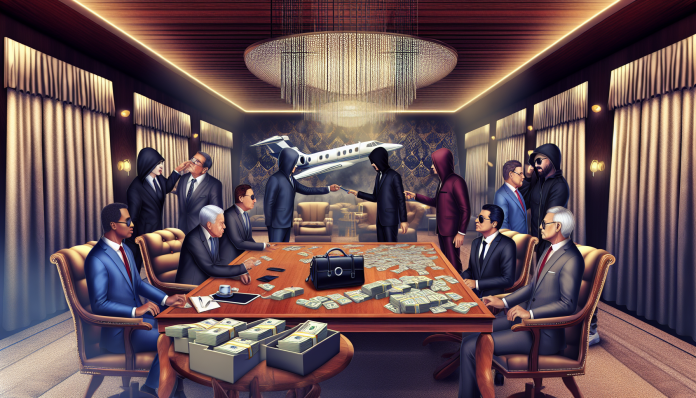Introduction
The Vatican—an emblem of faith and sanctity—has never been devoid of intrigue, especially when it comes to matters of the flesh. Tucked away behind the holy walls of this ecclesiastical enclave lies a profound narrative threaded with power, scandal, and secrecy. The tale of a secret sex club rumored to have operated within the confines of the Vatican has captured the imagination of both historians and modern critics.
This scandal is not merely sensationalism; it serves as a lens through which we can analyze shifting societal norms regarding sexuality, power, and morality. The Vatican sex club allegedly flourished during a time when strict sexual morals governed society, igniting discussions that resonate even in today’s landscape of liberal values, where personal freedom and sexual expression are celebrated.
The Scandal
While details remain murky due to the clandestine nature of the alleged club, whispers of illicit goings-on began to circulate in the late 1970s, coinciding with a series of scandals involving high-ranking clergy members. The stories often suggested a hidden world of decadent parties, where bishops, cardinals, and members of the clergy mingled with female companions—a far cry from their public personas characterized by celibacy and chastity.
Key Events and Reactions
-
Late 1970s: Sources began to report on informal gatherings held at various properties owned by the Church, with claims that these events included not just drinking and revelry but also sexual encounters.
-
The Scandal of the “Vatileaks”: In 2012, leaked documents unveiled the Vatican’s inner workings, revealing corruption, mismanagement, and suggestions of further impropriety. Though not directly connected to the sex club, the resulting media frenzy reignited interest in sexual misconduct among clergy.
- Papal Responses: Notably, Pope Francis has taken a stance against clerical sexual abuse, addressing the broader implications of a culture that has long excused or overlooked such behavior among church leaders.
Public reactions to these reports varied. Many saw the church’s involvement in sex scandals as hypocritical, particularly given its historical condemnation of sexual immorality. Prominent figures in the Catholic Church expressed outrage at the behavior while condemning the very existence of such a so-called “sex club.”
Quotes and Perspectives
In 1982, famed journalist and author Andrew Greeley noted, “The greatest scandal of the church is not the sex—it is the hypocrisy,” highlighting the dissonance between the moral messages propagated by the Church and the actions of its representatives.
As whispers turned to headlines, many devout Catholics struggled with a burgeoning sense of betrayal, deepening the crisis of credibility for the Church as it navigated a dual narrative of sin and salvation.
Moral and Cultural Analysis
Societal Reactions
During the late 20th century, societal expectations surrounding sexual conduct were markedly stringent. The sexual revolution of the 1960s had begun to chip away at these norms, but many still adhered to traditional views, particularly within the conservative segments of society. People expected leaders—especially those in religious positions—to embody moral integrity and lead by example.
Consequences for Those Involved: The fallout for clergy members involved in such scandals often led to public disgrace, loss of position, and, in some instances, criminal charges. The hypocrisy displayed by the Church undermined its moral authority, creating a rift that persists today. With shrinking congregations and dwindling trust in Church institutions, these scandals had lasting implications.
Modern Perspectives
Fast forward to today, where liberal and progressive values encourage greater openness about sexuality and personal freedom.
-
Changing Attitudes Towards Sexuality: The modern audience tends to embrace sexual expression as a normal part of human experience. Concepts of consent, sexual identity, and personal freedom dominate discussions about sexual ethics, moving away from the rigid moralism that characterized previous generations.
- Contemporary Morals vs. Historical Norms: Where once the Church’s stance on celibacy was met with reverence, it faces challenges as society increasingly recognizes the complexity of human sexuality. The palpable anger of decades past toward clerical hypocrisy may now transpose into a broader critique of institutional power dynamics, where the emphasis has shifted from moral failings to a call for transparency and accountability.
Conclusion
The inherent irony of a secret sex club within the Vatican encapsulates a paradox that transcends time: the entanglement of power and sexuality, cloaked in a veneer of morality. As society evolves, the implications of such scandals reveal much about our changing attitudes toward sex, power, and personal freedom.
The Vatican’s secret sex club serves as more than a mere scandal; it is a poignant reminder of the human experience, shaped by the contours of societal values and power structures. In a landscape increasingly defined by liberalism and inclusivity, such historical narratives compel us to reflect critically on how far we’ve come—and how much further we have to go.
As we delve into these fascinating tales of the past, consider how the legacy of these scandals continues to influence modern discourse surrounding morality and personal agency. After all, history doesn’t merely repeat itself; it challenges us to grow and adapt, shaping our understanding of not just who we are, but who we aspire to be.

